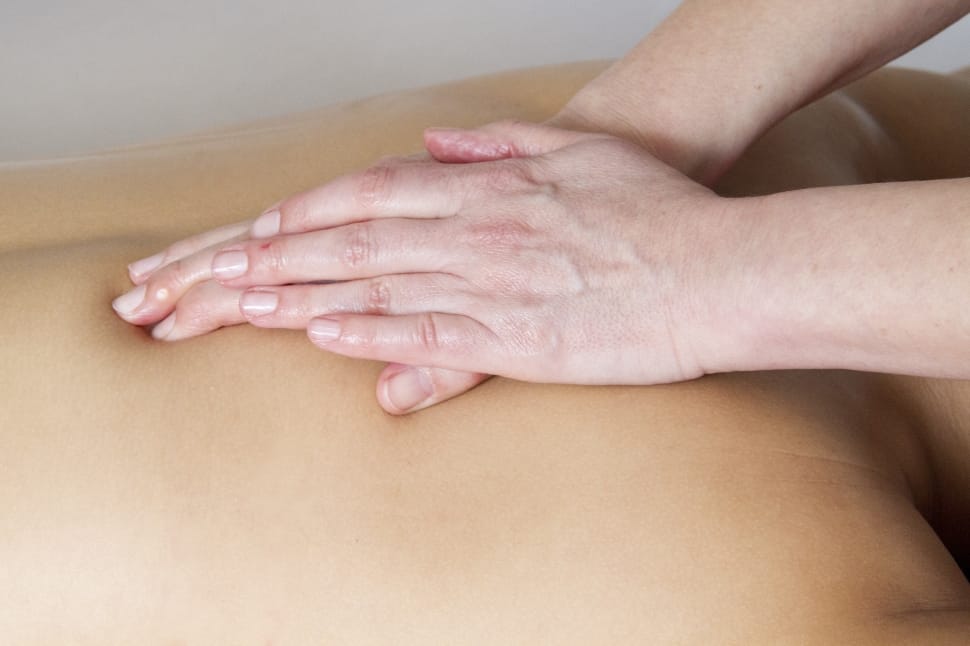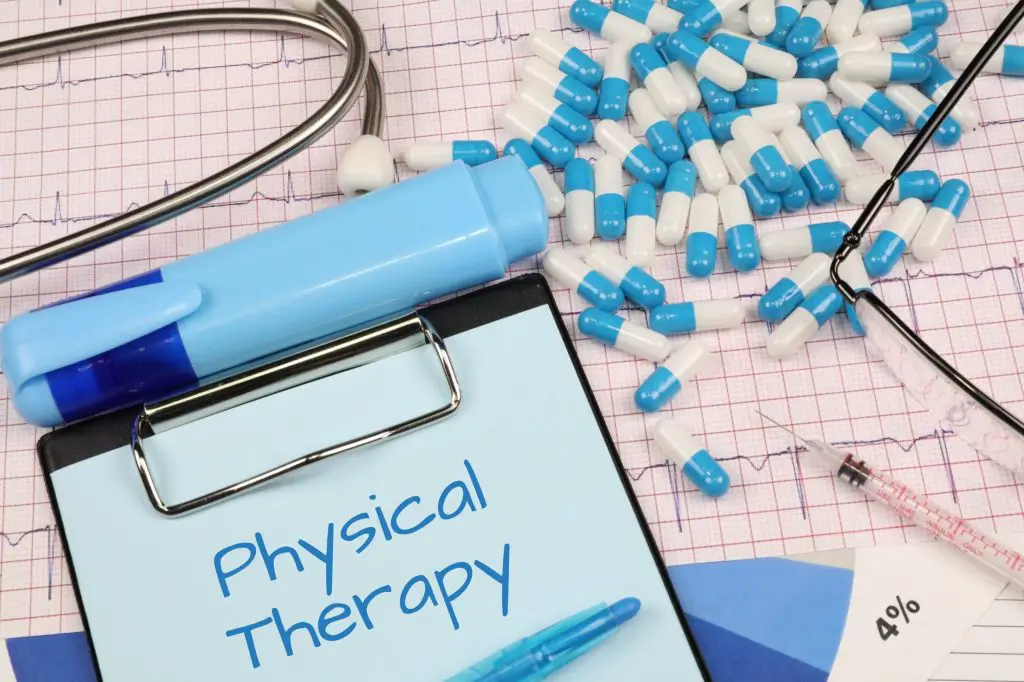If you’re looking for herniated disc treatment at home, you’ve come to the right place. Here you’ll find everything you need to know about herniated discs, from symptoms and causes to diagnosis and treatment. We’ll also share some tips on how to prevent herniated discs from happening in the first place. So whether you’re looking for information on how to treat a herniated disc or how to prevent one from happening, this is the place for you.
Contents
Heat and cold therapy
There are two common methods of heat and cold therapy: level heat and cold. Level heat is applied to the entire area that hurts, while cold is targeted more specifically to a smaller, troublesome spot. The choice between the two is often a matter of personal preference, but both can be effective means of pain relief.
Heat therapy works by increasing blood flow to the local tissue, which in turn increases the temperature of the tissue. The increase in temperature has an inflammatory effect, which can help to reduce pain and muscle tension. Cold therapy works by numbing the affected area and reducing inflammation.
There are several options for heat delivery, including heating pads, warm baths, hot compresses, and adhesive heat wraps. Heat delivery should be consistent and at a moderate level in order to avoid thermal injury. Cold therapy can be achieved with ice packs or cold compresses. It is important to wrap ice packs in a towel in order to avoid direct contact with the skin, as this can cause frostbite.
It is generally recommended to apply heat for 20-30 minutes at a time, multiple times per day. Cold therapy should be applied for 10-15 minutes at a time, again multiple times per day. These are general guidelines – you may need to experiment with different timings and temperatures in order to find what works best for you. You should never apply heat or cold for longer than 30 minutes at a time as this could lead to tissue damage.
Moderate Physical Activity to Release Endorphins
The body releases endorphins in response to moderate-intensity aerobic exercise, which can help to minimize pain. Additionally, water counteracts the effects of gravity and can help to reduce pressure on the spinal discs.
If your herniated disc is not severe, your healthcare provider may recommend a physical therapy program that includes exercise. Low-impact activities such as swimming or riding a recumbent bicycle are often recommended because they will not jar the spine. More strenuous activities such as jogging or running should be avoided because they may aggravate your condition.
If you have a more severe herniated disc, you may need to limit your activities and avoid any impact activities such as running or jumping. Cycling is often recommended because it is a low-impact activity that does not jar the spine.
Before beginning any exercise program, it is important to consult with your healthcare provider to ensure that it is safe for you to do so.
Your Sleep Position Helps Relieve Herniated Disc Pain
Your sleep position plays a big role in how much your pain from a herniated disc bothers you at night. It can also help determine how well you’ll be able to sleep. Most people with a herniated disc prefer sleeping on their side. This position takes the pressure off the nerve that’s being pinched by the herniated disc.
If you sleep on your side, you may want to use a different pillow than you use when you sleep on your back or stomach. When you’re lying on your side, put a pillow between your knees. This will help keep your spine in alignment. You may also want to use a small pillow under your neck for added comfort.
If you sleep on your stomach, put a pillow under your hips, not under your stomach. This will help keep pressure off the discs in your lower back. Stomach sleeping can make back pain worse, so it’s not the best position if you’re trying to relieve pain from a herniated disc.
The best way to find a comfortable position is to experiment until you find one that works best for you and relieves your pain. If you’re having trouble finding a good position, talk to your doctor or physical therapist about other options.
Can McKenzie Method Help Shift the Pain?
If you have ever had a herniated disc, you know how excruciating the pain can be. You may have even been told by your doctor that the only way to find relief is through surgery. But what if there was a way to ease the pain and potentially heal the injury without going under the knife?
The McKenzie Method, also known as Mechanical Diagnosis and Therapy (MDT), is a specific approach to physical therapy that has shown promise in treating lumbar pain, especially disc-related pain. MDT is based on the premise that pain results from abnormalities in key muscle groups that support the spine. By targeting these muscle groups with specific exercises and stretches, it is possible to alleviate pain and improve function.
One of the benefits of MDT is that it can be done at home with little to no equipment. All you need is a mat or towel for comfort and to prevent injury. The focus of MDT is on back strengthening, so most of the exercises will target your lower back and core muscles.
Before beginning any at-home treatment, it’s important to consult with your doctor or a physical therapist to get an accurate diagnosis and develop a plan that is tailored to your specific symptoms. Once you have been cleared to begin MDT, there are a few things you can do on your own to get started:
- Familiarize yourself with the basics of MDT. There are many resources available online or through your local library.
- Find a comfortable place in your home where you can do the exercises without interruption or distractions.
- Begin with simple exercises and stretches, gradually progressing to more difficult ones as tolerated.
- Remember to listen to your body – if an exercise causes increased pain, stop immediately and consult with your physical therapist.
- Be patient – it may take several weeks or even months before you see significant improvement in your symptoms.
If at-home treatment is not providing relief from your symptoms, consider seeking out a physical therapist who is trained in MDT for more guidance and support. With commitment and perseverance, the McKenzie Method may just be what you need to find relief from chronic back pain caused by a herniated disc
Massage May Help Reduce Pain
If you have a herniated disc, you may be wondering if there is anything you can do at home to ease the pain. While rest and ice may help reduce inflammation, massage may also be beneficial.
One study found that massage was helpful in reducing lumbar pain, postural training, and physical therapy. The study participants who received massage had less pain and improved function compared to those who did not receive massage.

Massage may be a secondary source of relief for herniated discs. Cold therapy is typically used as the primary treatment for this condition. However, some people find that massaging the affected area helps to reduce pain.
There are a few different ways to massage the lumbar area. You can use your hands or a lacrosse ball to apply constant pressure to multiple trigger points. Alternatively, you can try myofascial release by gently stretching the muscles in the affected area.
If you have poor posture, postural training may also help reduce your risk of a herniated disc. This type of exercise can help improve your posture and alleviate pressure on your spine.
Take a Rest
A herniated disc can be very painful. Treatment at home may help relieve your pain and speed up your healing time.
First, apply an ice pack or a wet towel to the area for 20 minutes several times a day. This will help reduce swelling and pain.
Then, take over-the-counter medication as directed by your doctor. Ibuprofen or naproxen may help reduce pain and swelling.
After a few days, you may be able to do other activities such as walking or stretching. But be sure to check with your doctor first.
If your back still hurts, you may need bed rest for a short period of time. This will give the disc time to heal.
If home treatment does not work, you may need other treatments such as physical therapy or surgery. But most people get better with home treatment and do not need these other treatments.
Take Medications?
If you herniated a disc, your doctor may recommend that you take medication to ease the pain. There are different types of medications that can be effective, but it’s important to talk to your doctor about the pros and cons of each option before starting any medication.
Over-the-counter options include Motrin, Aleve, and Advil. These are anti-inflammatory drugs and can help reduce swelling around the herniated disc. Acetaminophen (Tylenol) can also help with pain, but it’s important to be aware that taking large amounts of acetaminophen can damage your liver.

If over-the-counter medications aren’t enough to relieve your pain, your doctor may prescribe stronger options. Narcotics such as Percocet or Oxycontin can be effective but they can also be addictive and should only be used for short periods of time. Muscle relaxants such as Flexeril or Soma can help ease muscle spasms around the herniated disc. Finally, drugs such as Lyrica or Neurontin can help with nerve pain.
As with any medication, there are potential risks and side effects associated with herniated disc treatments. Be sure to talk to your doctor about all of the risks and benefits before starting any medication.
Physical Therapy
The mainstay of conservative herniated disc treatment is physical therapy. A wide variety of different physical therapy modalities are available, and the specific ones that are used will be based on the individual patient’s needs and preferences.
One of the most common treatments is the use of a stationary bicycle. This is an aerobic exercise that can help to increase blood flow to the affected area and reduce inflammation. Electrical muscle stimulation and ultrasound therapy are also sometimes used. These modalities can help to reduce pain and increase the range of motion.

Specific physical therapy programs will be designed based on the individual patient’s needs. Massage may also be used as a part of the physical therapy program. The goal of all of these treatments is to reduce pain and increase function.
Physical therapy is often done on an outpatient basis, but it may also be done in a home setting. A physical therapist will come to the home to provide treatments. Ice is also often recommended as a home treatment for herniated discs.
Inversion Therapy
Inversion therapy is a form of spinal traction that has been used for centuries to treat back pain. This treatment involves suspending the body in an upside-down position using an inversion device such as an inversion table or inversion chair. The goal of inversion therapy is to stretch the spine and take pressure off of the discs, which can help to relieve pain and improve function.
Inversion therapy has been shown to be effective in treating herniated discs, degenerative disc disease, and other conditions that cause back pain. One study found that inverting at a shallow angle for just two minutes per day can lead to a significant reduction in back pain after just one week. Another study found that inversion therapy can provide relief from muscle pain by creating a suction effect that helps to lengthen the spine and relieve pressure on the discs.
While inversion therapy is generally considered safe, it is important to consult with a doctor before beginning any new exercise program. In some cases, inversion therapy may not be recommended due to preexisting medical conditions such as high blood pressure or glaucoma. It is also important to use an inversion device that is specifically designed for your body size and weight.
Frequently Asked Questions
What is the fastest way to heal a herniated disc?
There is no definitive answer to this question as the best way to heal a herniated disc may vary depending on the individual case. However, some suggested methods of treatment for a herniated disc include physical therapy, chiropractic care, and massage. In some cases, surgery may be necessary to correct the problem.
Can I fix a herniated disc on my own?
A herniated disc can often be treated at home with over-the-counter pain relievers, ice, and heat. However, if the pain is severe, you may need to see a doctor.
What should you not do with a herniated disc?
A herniated disc can be a serious condition that may require surgery. You should not try to treat a herniated disc on your own.
disc, pain, spine, treatment, surgery, discs, oil, therapy, herniation, back, disk, symptoms, home, area, doctor, neck, relief, health, nerve, exercise, time, muscles, exercises, body, treatments, muscle, remedies, day, pressure, patients, leg, inflammation, people, options, blood, lumbar, recovery, care, heat, nerves, herniated disc, disc herniation, affected area, herniated disk, physical therapy, essential oil, carrier oil, 10-15 repetitions, herniated discs, back pain, blood circulation, home remedies, disc treatment, herniated disc treatment, heat therapy, bulging disc, nerve pain, pain relief, coconut oil, spinal discs, spinal disc, slipped disc, physical therapist, blood flow, leg pain, proteolytic enzymes, black pepper, disc pain, medical advice, spinal cord
Conclusion
To summarise, there are a number of options available for the treatment of a herniated disc, ranging from conservative to aggressive. In most cases, conservative measures such as physical therapy and rest will be sufficient to treat the condition. However, in a small number of cases, surgery may be necessary.
Inversion therapy is one potential aggressive option that may be considered for the treatment of a herniated disc. Though there is limited evidence to support its efficacy, a preliminary study has shown that it may be effective in reducing disc pain and improving function in those with a herniated disc. However, it is important to note that inversion therapy carries with it a risk of serious side effects and should only be used under the supervision of a qualified healthcare professional.
Overall, it is important to remember that there is no one-size-fits-all solution for the treatment of a herniated disc. The best course of action will vary depending on the individual situation. If you are considering inversion therapy for the treatment of your herniated disc, be sure to discuss it with your healthcare provider to ensure that it is the right option for you.

Alan Walker is an author, researcher, and contributing writer at Spine Institute NY. He is a typical introvert, coffee fanatic, and freelancer.”

